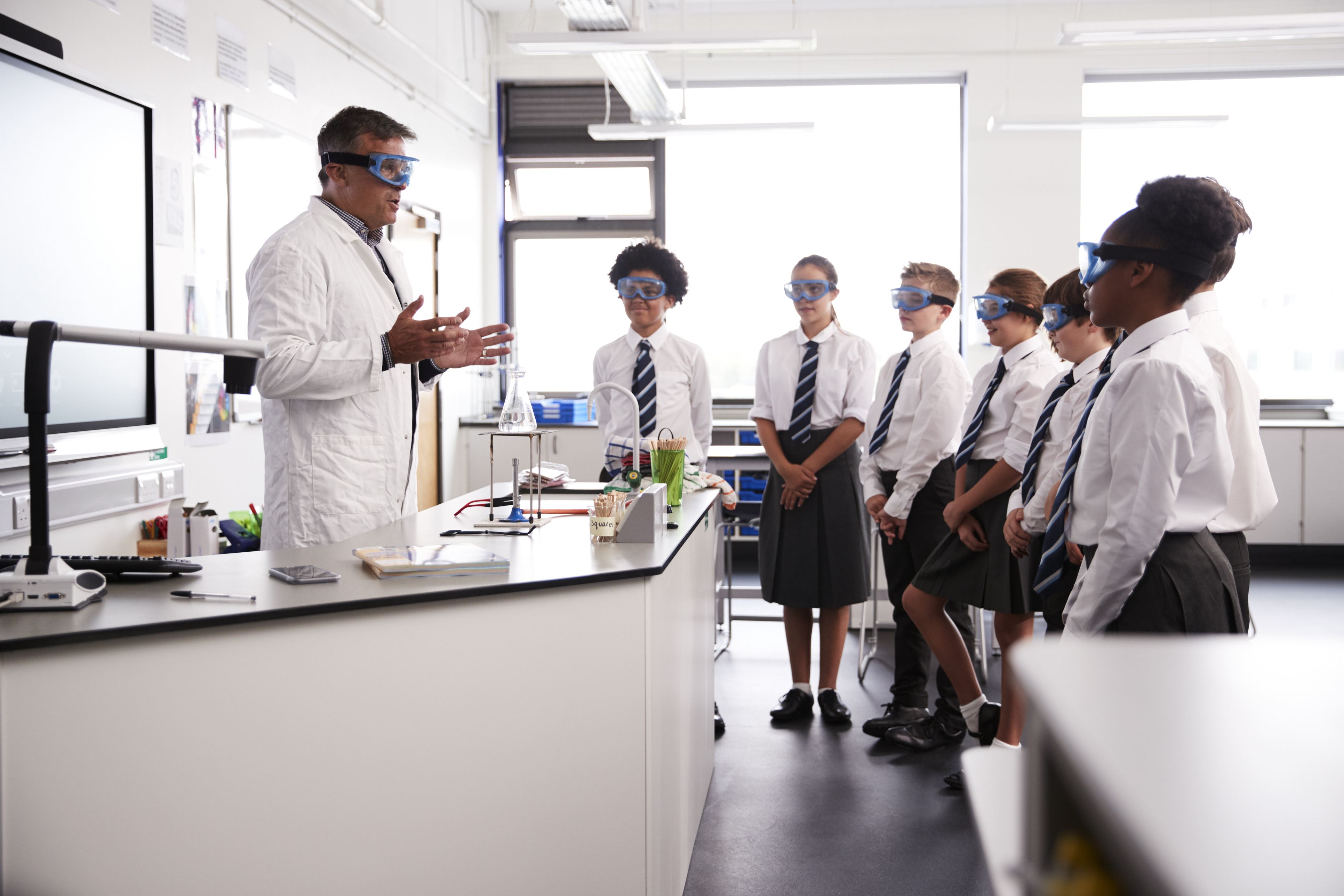Grading charter schools
Independent alternatives to public schools have sprung up across the nation. Are they succeeding?

Independent alternatives to public schools have sprung up across the nation. Are they succeeding? Here's everything you need to know:
What are charter schools?
They're publicly funded, independently run alternatives to traditional public schools. They have greater freedom than standard public schools to develop their own curricula and budgets, hire and fire teachers over performance, and set schedules and behavioral rules such as mandating uniforms. The "charter" in the name refers to a contract between the school and a state oversight body, or "authorizer." Since the first charter school opened in Minnesota in 1992, their numbers have boomed to more than 7,500 charter schools across 43 states and the District of Columbia. More than 3.3 million students now attend one — a number that's tripled since 2006. In some cities, including Detroit and New Orleans, a majority of public school students attend charter schools. The charter school movement remains highly controversial, but most experts agree that the best charters are producing phenomenal results. "There's a group at the top that are just remarkably successful in terms of helping students move forward," Margaret Raymond, the director of Stanford University's Center for Research on Education Outcomes (CREDO), told New York magazine. "They're using resources in a dramatically different way."
The Week
Escape your echo chamber. Get the facts behind the news, plus analysis from multiple perspectives.

Sign up for The Week's Free Newsletters
From our morning news briefing to a weekly Good News Newsletter, get the best of The Week delivered directly to your inbox.
From our morning news briefing to a weekly Good News Newsletter, get the best of The Week delivered directly to your inbox.
Why are they controversial?
Teachers' unions and some progressives say that charter schools siphon off public education dollars, with lax oversight and very mixed results. Charter school advocates say they offer much-needed choice to parents and kids in poor neighborhoods with failing public schools, where many African-American and Hispanic students often lag white counterparts in wealthier districts by three or four grade levels. Charter schools also introduce free-market competition into education: They have to attract students, who only attend them by choice — and if the schools underperform, they can be shut down by states. Less hidebound by rules and tradition, charter schools are free to be "incubators of innovation," as charter school booster President Obama put it in 2012. Charter schools with the best track records — such as Success Academy, the Knowledge Is Power Program (KIPP), and Uncommon Schools — have longer school days, provide intensive tutoring, enforce order and discipline in classrooms, and promote high expectations for students, including that they will go on to college. There is no tenure protection for teachers, and if their students do not make the expected progress, they are fired.
How have charters performed?
There's no simple answer. "The charter track record can best be described as stunningly uneven," wrote the authors of the 2016 book Charter Schools at the Crossroads. For-profit charters — which make up about 13 percent of the total — have had mostly disappointing results. In general, state and federal studies have found that charters produce higher student achievement than regular public schools in poor, nonwhite urban areas, but in rural and suburban areas are not significantly better than public schools — and are sometimes worse. The Brookings Institution concluded in 2019 that on average, charter schools' and traditional schools' performance is "about the same." But charter advocates say that the numbers have steadily improved as less-effective schools are weeded out. In some big cities, the advocates say, the charters' success is spectacular.
A free daily email with the biggest news stories of the day – and the best features from TheWeek.com
What's the proof?
In Boston, a team of researchers concluded that charter schools had reduced "the black-white reading gap in middle school by two-thirds." A 2015 CREDO study found urban charters gave their students the equivalent of 40 additional school days of learning in math and 28 additional days of learning in reading every year. After Hurricane Katrina, New Orleans made every public school a charter school. Since then, the graduation rate has grown by 9 percent, the number of students attending college has jumped 10 percent, and student math and reading scores have moved from the 22nd percentile nationally to the 37th. "It is very unusual to see programs and policies improve all of these outcomes," said researchers Douglas Harris and Matthew Larsen of Tulane University.
What is the future of charter schools?
Politically, the ground has shifted in recent years. While support among conservatives remains strong, progressive opposition has intensified out of fear that charters will undermine public education. That opposition hardened during the presidency of Donald Trump, whose education secretary, Betsy DeVos, was a staunch charter school advocate. In 2016, the NAACP called for a moratorium on the expansion of charters. In Los Angeles County, the board of education has called for a moratorium on new charters. In New York City, where 235 charter schools serve 123,000 students, Mayor Bill de Blasio has said he "hates" charters and is trying to restrict their growth. On the campaign stump, President Joe Biden declared himself "not a charter school fan," and in a 2018 poll, only 36 percent of Democrats supported charter schools. Sociologist Eve Ewing, who studies education, says the analysis of charter school performance "has become more of an ideological debate, split neatly into opposing factions, than it is a policy discussion informed by facts."
Virtual charters: An 'F'
The pandemic created a boom for the most controversial sector of charter education: virtual charter schools. Such schools account for a small segment of charter students, enrolling about 300,000 full-time students in the 2017–18 school year. But that number has spiked over the past year, as parents have sought alternatives for children shut out of traditional classrooms. K12 Inc., a major operator of virtual charter schools, saw its enrollment grow 57 percent, to 195,000; Connections Academy, which operates 46 schools across 29 states, reported 41 percent growth. That's unwelcome news for critics who say the virtual schools — many of which are run by for-profit operators — have been dismal performers, producing high student turnover, low scores and graduation rates, and accusations of fraud and profiteering. A CREDO study of online charter students' performance between 2008 and 2013 found they lost 72 days of learning in reading compared with students in traditional public schools — and a staggering 180 days in math. "It is literally as if the kid did not go to school for an entire year," said CREDO director Margaret Raymond.
This article was first published in the latest issue of The Week magazine. If you want to read more like it, you can try six risk-free issues of the magazine here.
-
 Has Zohran Mamdani shown the Democrats how to win again?
Has Zohran Mamdani shown the Democrats how to win again?Today’s Big Question New York City mayoral election touted as victory for left-wing populists but moderate centrist wins elsewhere present more complex path for Democratic Party
-
 Millions turn out for anti-Trump ‘No Kings’ rallies
Millions turn out for anti-Trump ‘No Kings’ ralliesSpeed Read An estimated 7 million people participated, 2 million more than at the first ‘No Kings’ protest in June
-
 Ghislaine Maxwell: angling for a Trump pardon
Ghislaine Maxwell: angling for a Trump pardonTalking Point Convicted sex trafficker's testimony could shed new light on president's links to Jeffrey Epstein
-
 The last words and final moments of 40 presidents
The last words and final moments of 40 presidentsThe Explainer Some are eloquent quotes worthy of the holders of the highest office in the nation, and others... aren't
-
 The JFK files: the truth at last?
The JFK files: the truth at last?In The Spotlight More than 64,000 previously classified documents relating the 1963 assassination of John F. Kennedy have been released by the Trump administration
-
 'Seriously, not literally': how should the world take Donald Trump?
'Seriously, not literally': how should the world take Donald Trump?Today's big question White House rhetoric and reality look likely to become increasingly blurred
-
 Will Trump's 'madman' strategy pay off?
Will Trump's 'madman' strategy pay off?Today's Big Question Incoming US president likes to seem unpredictable but, this time round, world leaders could be wise to his playbook
-
 Democrats vs. Republicans: who are US billionaires backing?
Democrats vs. Republicans: who are US billionaires backing?The Explainer Younger tech titans join 'boys' club throwing money and support' behind President Trump, while older plutocrats quietly rebuke new administration


